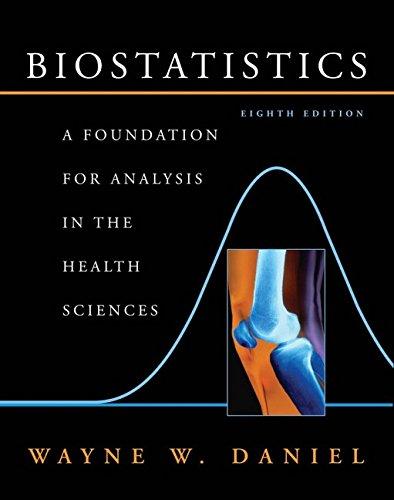4. Swor et al. (A-10) looked at the effectiveness of cardiopulmonary resuscitation (CPR) training in people over
Question:
4. Swor et al. (A-10) looked at the effectiveness of cardiopulmonary resuscitation (CPR) training in people over 55 years old. They compared the skill retention rates of subjects in this age group who completed a course in traditional CPR instruction with those who received chest-compression only cardiopulmonary resuscitation (CC-CPR). Independent groups were tested 3 months after training. The table below shows the skill retention numbers in regard to overall competence as assessed by video ratings done by two video evaluators.
Rated Overall Competent CPR CC-CPR Total Yes 12 15 27 No 15 14 29 Total 27 29 56 SOURCE: Robert Swor, Scott Compton, Fem Vining, Lynn Ososky Farr, Sue Kokko, Rebecca Pascual, and Raymond E. Jackson, "A Randomized Controlled Trial of Chest Compression Only CPR for Older Adults- Pilot Study," Resuscitation, 58 (2003), 177-185.
(a) Find the following probabilities and explain their meaning: 1. A randomly selected subject was enrolled in the CC-CPR class. 2. A randomly selected subject was rated competent. 3. A randomly selected subject was rated competent and was enrolled in the CPR course. 4. A randomly selected subject was rated competent or was enrolled in CC-CPR. 5. A Randomly selected subject was rated competent given that they enrolled in the CC-CPR course.
(b) We define the following events to be = A a subject enrolled in the CPR course Ba subject enrolled in the CC-CPR course Ca subject was evaluated as competent Da subject was evaluated as not competent Then explain why each of the following equations is or is not a true statement: = 1. P(ANC) P(CNA) 3. P(A) P(AUC) + P(AUD) 5. P(DIA) P(D) 7. P(AB)=0 9. P(AND) P(A) P(A|D) = 2. PAUB) P(BUA) 4. P(BUC) P(B) + P(C) 6. P(CB) = P(C)P(B) 8. P(COB) P(B) P(C | B)
Step by Step Answer:

Biostatistics A Foundation For Analysis In The Health Sciences
ISBN: 9780471456544
8th Edition
Authors: Wayne W. Daniel






